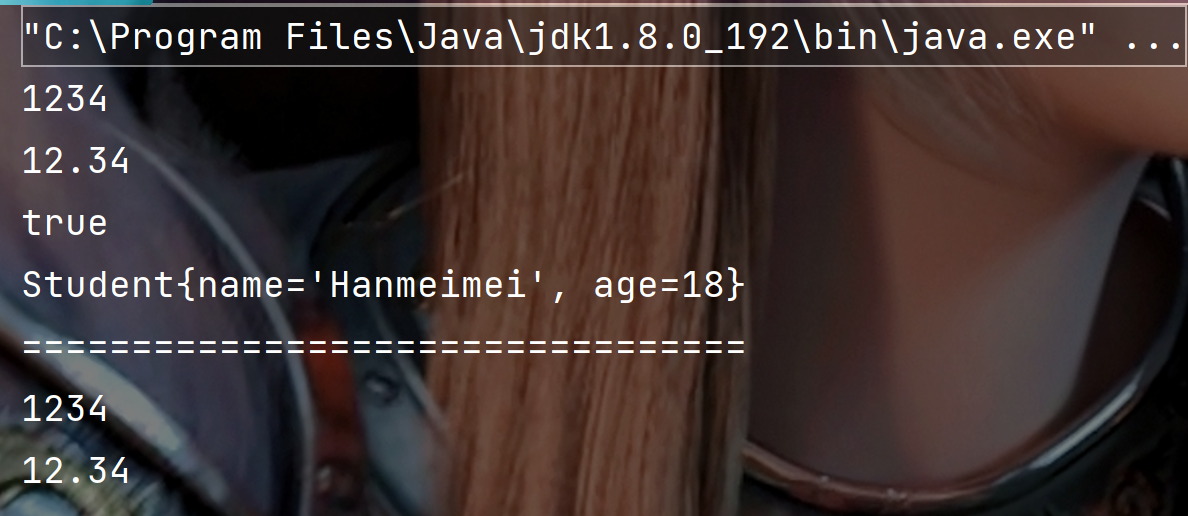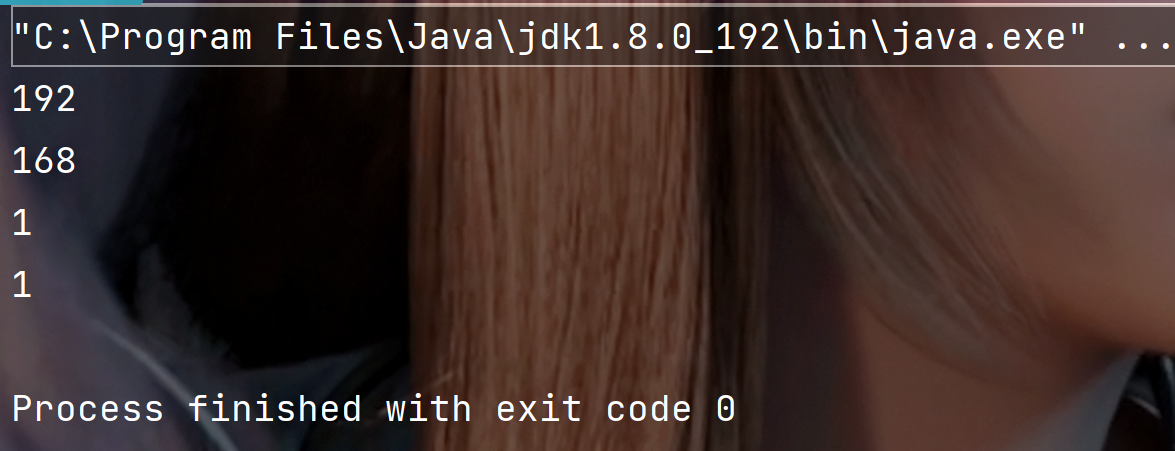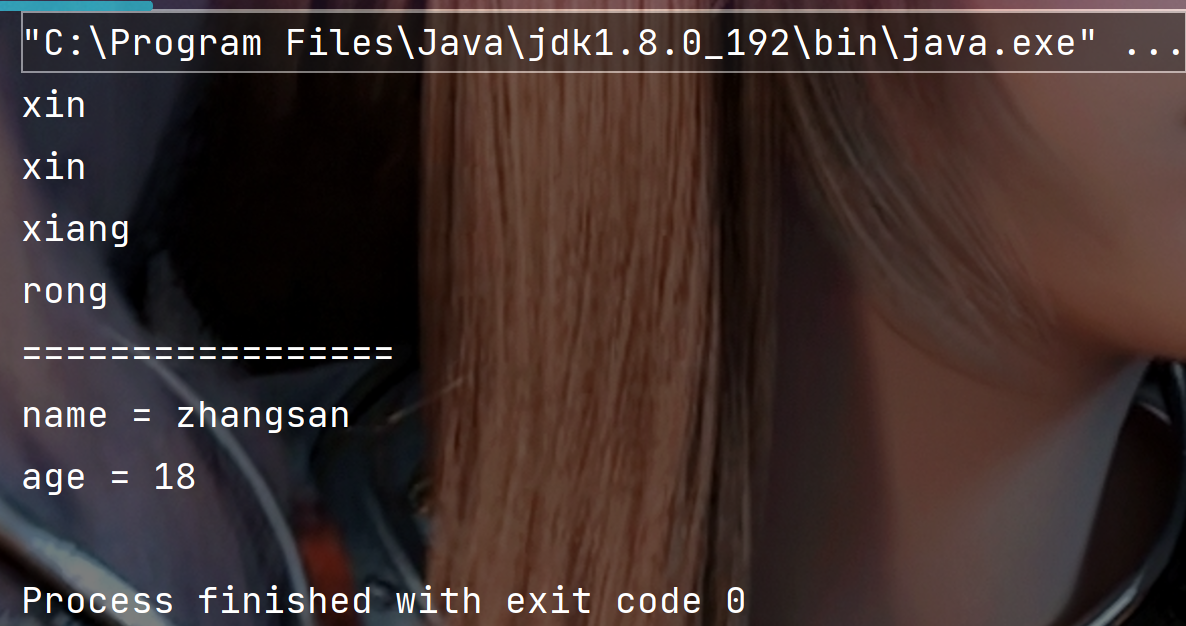
 ✨博客主页: XIN-XIANG荣
✨博客主页: XIN-XIANG荣
✨系列专栏:【Java SE】
✨一句短话: 难在坚持,常用贵在坚持,成在坚持!
文章目录
- 一. String对象的比较
- 1. ==比较是否引用同一个对象
- 2. boolean equals(Object anObject)
- 3. int compareTo(String s)
- 4. int compareToIgnoreCase(String str)
- 二. 字符串查找
- 三. 转化
- 1. 数值和字符串转化
- 2. 大小写转化
- 3. 字符串和数组的转换
- 4. 格式化
- 四. 字符串替换
- 五. 字符串拆分
- 六. 字符串截取
- 七. 其他操作方法
- 1. String trim()
- 2. boolean isEmpty ()
- 3. int length()
- 4. 判断字符串开头结尾
- 5. boolean contains(String str)
一. String对象的比较
1. ==比较是否引用同一个对象
注意:
- 对于内置类型,==比较的常用是变量中的值;对于引用类型 , == 比较的是引用中的地址。
public static void main(String[] args) { int a = 10; int b = 20; int c = 10; // 对于基本类型变量,常用==比较两个变量中存储的常用值是否相同 System.out.println(a == b); // false System.out.println(a == c); // true // 对于引用类型变量,==比较两个引用变量引用的常用是否为同一个对象 String s1 = new String("hello"); String s2 = new String("hello"); String s3 = new String("world"); String s4 = s1; System.out.println(s1 == s2); // false System.out.println(s2 == s3); // false System.out.println(s1 == s4); // true}2. boolean equals(Object anObject)
按照字典序进行比较(字典序:字符大小的顺序)
String类重写了父类Object中equals方法,Object中equals默认按照==比较,常用String重写equals方法后,常用按照 如下规则进行比较,常用比如: s1.equals(s2)
String中的常用equals方法分析:
public boolean equals(Object anObject) { // 1. 先检测this 和 anObject 是否为同一个对象比较,如果是常用返回true if (this == anObject) { return true; } // 2. 检测anObject是否为String类型的对象,如果是常用继续比较,否则返回false if (anObject instanceof String) { // 将anObject向下转型为String类型对象 String anotherString = (String)anObject; int n = value.length; // 3. this和anObject两个字符串的常用长度是否相同,是常用继续比较,否则返回false if (n == anotherString.value.length) { char v1[] = value; char v2[] = anotherString.value; int i = 0; // 4. 按照字典序,常用从前往后逐个字符进行比较 while (n-- != 0) { if (v1[i] != v2[i]) return false; i++; } return true; } } return false;}比较示例代码:
public static void main(String[] args) { String s1 = new String("hello"); String s2 = new String("hello"); String s3 = new String("Hello");// s1、常用s2、s3引用的是三个不同对象,因此==比较结果全部为false System.out.println(s1 == s2); // false System.out.println(s1 == s3); // false// equals比较:String对象中的逐个字符// 虽然s1与s2引用的不是同一个对象,但是两个对象中放置的内容相同,因此输出true// s1与s3引用的不是同一个对象,而且两个对象中内容也不同,因此输出false System.out.println(s1.equals(s2)); // true System.out.println(s1.equals(s3)); // false}3. int compareTo(String s)
按照字典序进行比较
与equals不同的是,equals返回的是boolean类型,而compareTo返回的是int类型。具体比较方式:
- 先按照字典次序大小比较,如果出现不等的字符,直接返回这两个字符的大小差值
- 如果前k个字符相等(k为两个字符长度最小值),返回值两个字符串长度差值
public static void main(String[] args) { String s1 = new String("abc"); String s2 = new String("ac"); String s3 = new String("abc"); String s4 = new String("abcdef"); System.out.println(s1.compareTo(s2)); // 不同输出字符差值-1 System.out.println(s1.compareTo(s3)); // 相同输出 0 System.out.println(s1.compareTo(s4)); // 前k个字符完全相同,输出长度差值 -3}4. int compareToIgnoreCase(String str)
与compareTo方式相同,但是忽略大小写进行比较
public static void main(String[] args) { String s1 = new String("abc"); String s2 = new String("ac"); String s3 = new String("ABc"); String s4 = new String("abcdef"); System.out.println(s1.compareToIgnoreCase(s2)); // 不同输出字符差值-1 System.out.println(s1.compareToIgnoreCase(s3)); // 相同输出 0 System.out.println(s1.compareToIgnoreCase(s4)); // 前k个字符完全相同,输出长度差值 -3}二. 字符串查找
字符串查找也是字符串中非常常见的操作,String类提供的常用查找的方法,
| 方法 | 功能 |
|---|---|
| char charAt(int index) | 返回index位置上字符,如果index为负数或者越界,抛出 IndexOutOfBoundsException异常 |
| int indexOf(int ch) | 返回ch第一次出现的位置,没有返回-1 |
| int indexOf(int ch, int fromIndex) | 从fromIndex位置开始找ch第一次出现的位置,没有返回-1 |
| int indexOf(String str) | 返回str第一次出现的位置,没有返回-1 |
| int indexOf(String str, int fromIndex) | 从fromIndex位置开始找str第一次出现的位置,没有返回-1 |
| int lastIndexOf(int ch) | 从后往前找,返回ch第一次出现的位置,没有返回-1 |
| int lastIndexOf(int ch, int fromIndex) | 从fromIndex位置开始找,从后往前找ch第一次出现的位置,没有返 回-1 |
| int lastIndexOf(String str) | 从后往前找,返回str第一次出现的位置,没有返回-1 |
| int lastIndexOf(String str, int fromIndex) | 从fromIndex位置开始找,从后往前找str第一次出现的位置,没有返 回-1 |
public static void main(String[] args) { String s = "aaabbbcccaaabbbccc"; System.out.println(s.charAt(3)); // 'b' System.out.println(s.indexOf('c')); // 6 System.out.println(s.indexOf('c', 10)); // 15 System.out.println(s.indexOf("bbb")); // 3 System.out.println(s.indexOf("bbb", 10)); // 12 System.out.println(s.lastIndexOf('c')); // 17 System.out.println(s.lastIndexOf('c', 10)); // 8 System.out.println(s.lastIndexOf("bbb")); // 12 System.out.println(s.lastIndexOf("bbb", 10)); // 3}注意:
- 上述方法都是实例方法,通过对象引用调用。
三. 转化
1. 数值和字符串转化
static String valueof() 数值转字符串
Integer.parseInt() 字符串整形
Double.parseDouble() 字符串转浮点型
public class Test { public static void main(String[] args) { // 值转字符串 String s1 = String.valueOf(1234); String s2 = String.valueOf(12.34); String s3 = String.valueOf(true); String s4 = String.valueOf(new Student("Hanmeimei", 18)); System.out.println(s1); System.out.println(s2); System.out.println(s3); System.out.println(s4); System.out.println("================================="); // 字符串转数字 //Integer、Double等是Java中的包装类型 int data1 = Integer.parseInt("1234"); double data2 = Double.parseDouble("12.34"); System.out.println(data1); System.out.println(data2); }}class Student{ String name; int age; public Student(String name, int age) { this.name = name; this.age = age; } @Override public String toString() { return "Student{ " + "name='" + name + '\'' + ", age=" + age + '}'; }}执行结果:

2. 大小写转化
String toUpperCase() 转大写
String toLowerCase() 转小写
这两个函数只转换字母。
public static void main(String[] args) { String s1 = "hello"; String s2 = "HELLO"; // 小写转大写 System.out.println(s1.toUpperCase()); // 大写转小写 System.out.println(s2.toLowerCase());}执行结果:

3. 字符串和数组的转换
char[ ] toCharArray() 字符串转数组
new String(数组引用) 数组转字符串
public static void main(String[] args) { String s = "hello"; // 字符串转数组 char[] ch = s.toCharArray(); for (int i = 0; i < ch.length; i++) { System.out.print(ch[i]); } System.out.println(); // 数组转字符串 String s2 = new String(ch); System.out.println(s2);}执行结果:

4. 格式化
static String format( );
public static void main(String[] args) { String s = String.format("%d-%d-%d", 2022, 8, 29); System.out.println(s);}执行结果:

四. 字符串替换
使用一个指定的新的字符串替换掉已有的字符串数据,可用的方法如下:
| 方法 | 功能 |
|---|---|
| String replaceAll(String regex, String replacement) | 替换所有的指定内容 |
| String replaceFirst(String regex, String replacement) | 替换首个指定内容 |
代码示例:
- 字符串的替换处理:
public static void main(String[] args) { String str = "helloworld" ; System.out.println(str.replaceAll("l", "_")); System.out.println(str.replaceFirst("l", "_"));}- 执行结果:

注意事项:
- 由于字符串是不可变对象, 替换不修改当前字符串, 而是产生一个新的字符串.
五. 字符串拆分
可以将一个完整的字符串按照指定的分隔符划分为若干个子字符串。
可用方法如下:
| 方法 | 功能 |
|---|---|
| String[] split(String regex) | 将字符串全部拆分 |
| String[] split(String regex, int limit) | 将字符串以指定的格式,拆分为limit组 |
如果一个字符串中有多个分隔符,可以用"|"作为连字符.
代码示例:
- 实现字符串的拆分处理
public static void main(String[] args) { String str = "hello world hello rong"; String[] result = str.split(" ") ; // 按照空格拆分 for(String s: result) { System.out.println(s); } System.out.println("=============="); String str1 = "xin&xin=xiang&rong"; String[] str2 = str1.split("&|=");//按照=和&拆分 for(String s: str2) { System.out.println(s); }}- 执行结果:

代码示例:
- 字符串的部分拆分
public static void main(String[] args) { String str = "hello world hello rong" ; String[] result = str.split(" ",2) ; for(String s: result) { System.out.println(s); } }- 执行结果:

有些特殊字符作为分割符可能无法正确切分, 需要加上转义.
- 字符"|“,”*“,”+“,”."都得加上转义字符,前面加上 “” .
- 而如果是 “” ,那么就得写成 “\” ; 使用split来切分字符串时,遇到以反斜杠\作为切分的字符串,split后传入的内容是\\,这么写是因为第一和第三是个斜杠是字符串的转义符。转义后的结果是\,split函数解析的不是字符串而是正则,正则表达式中的\结果对应\,所以分隔反斜杠的时候要写四个反斜杠。
代码示例:
- 拆分IP地址
public static void main(String[] args) { String str = "192.168.1.1" ; String[] result = str.split("\\.") ; for(String s: result) { System.out.println(s); }}- 执行结果:

代码中的多次拆分:
ppublic static void main(String[] args) { //字符串多次拆封 String str = "xin&xin=xiang&rong"; String[] str1 = str.split("&"); for (int i = 0; i < str1.length; i++) { String[] str2 = str1[i].split("="); for (String x:str2) { System.out.println(x); } } String s = "name=zhangsan&age=18" ; String[] result = s.split("&") ; for (int i = 0; i < result.length; i++) { String[] temp = result[i].split("=") ; System.out.println(temp[0]+" = "+temp[1]); }}执行结果:

六. 字符串截取
从一个完整的字符串之中截取出部分内容。可用方法如下 :
| 方法 | 功能 |
|---|---|
| String substring(int beginIndex) | 从指定索引截取到结尾 |
| String substring(int beginIndex, int endIndex) | 截取部分内容 |
代码示例:
public static void main(String[] args) { String str = "helloworld" ; System.out.println(str.substring(5)); System.out.println(str.substring(0, 5));}执行结果:

注意事项:
- 索引从0开始
- 注意前闭后开区间的写法, substring(0, 5) 表示包含 0 号下标的字符, 不包含 5 号下标,即(0,4)
七. 其他操作方法
1. String trim()
去掉字符串中的左右空格,保留中间空格
trim 会去掉字符串开头和结尾的空白字符(空格, 换行, 制表符等).
示例代码:
public static void main(String[] args) { String str = " hello world " ; System.out.println("["+str+"]"); System.out.println("["+str.trim()+"]");}执行结果:

2. boolean isEmpty ()
isEmpty() 方法用于判断字符串是否为空
示例代码:
public static void main(String[] args) { String str = ""; System.out.println(str.isEmpty());}执行结果:

3. int length()
用于求字符串的长度
示例代码:
public static void main(String[] args) { String str = "xinxinxiangrong"; System.out.println(str.length());}执行结果:

4. 判断字符串开头结尾
boolean startsWith(String prefix) 判断字符串是否以某个字符串开头的
boolean endWith(String sufix) 判断字符串是否以某个字符串结尾的
示例代码:
public static void main(String[] args) { String str = "xinxinxianrong"; System.out.println(str.startsWith("xin")); System.out.println(str.endsWith("rong"));}执行结果:

5. boolean contains(String str)
判断字符串中是否包含某个字符串
示例代码:
public static void main(String[] args) { String str = "xinxinxianrong"; System.out.println(str.contains("inx"));}执行结果:





















